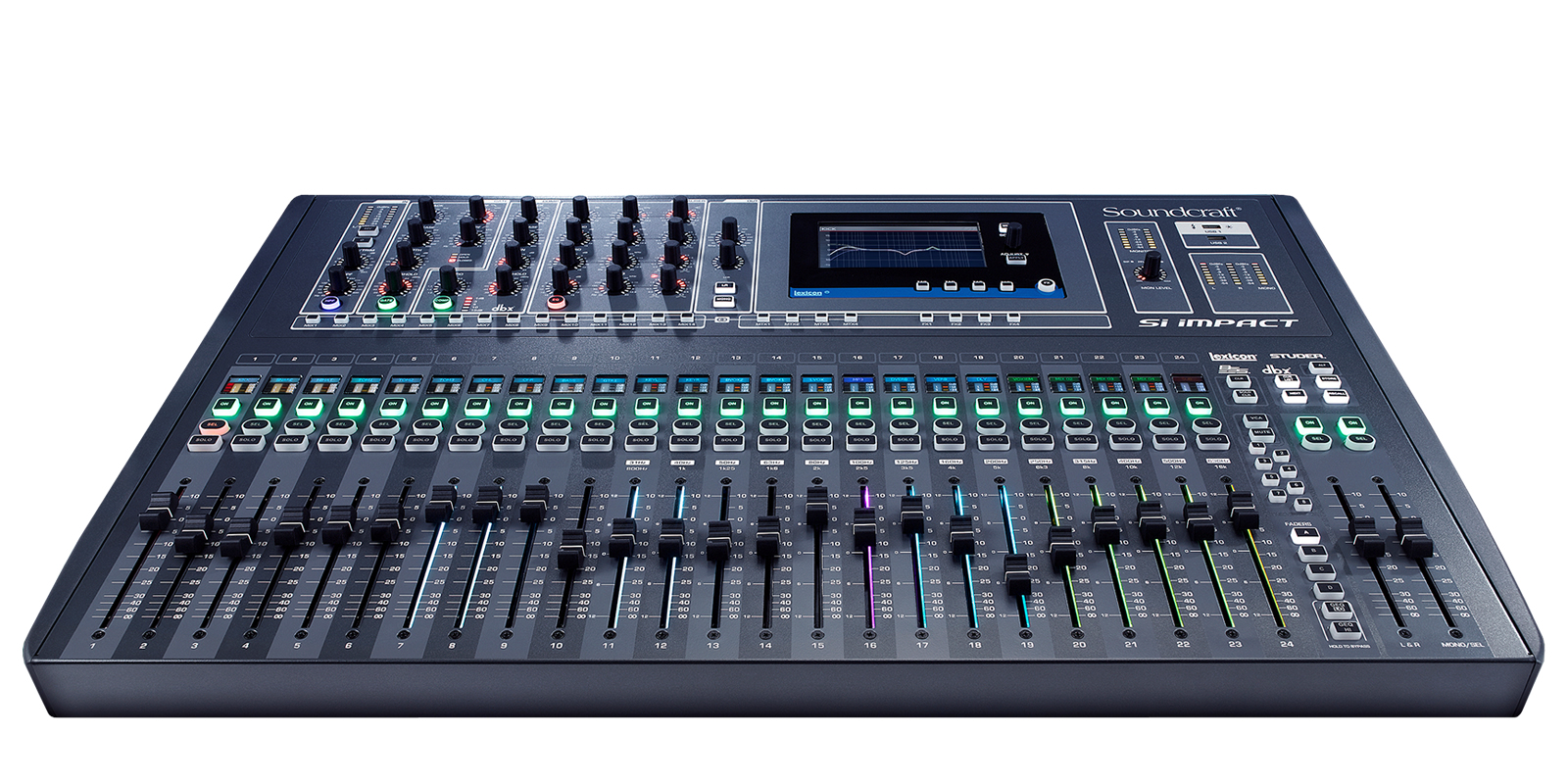ADSR TV
A curated directory of resources (plus some original content) for music producers and sound designers
Soundcraft Si Impact Digital Mixer
Everything you need to know to use this mixer - in one page.
Please note: everything on this page is definitely over-simplified and technically incorrect ...but that's intentional ;)
Video Introduction from Soundcraft
This is a quick list of this wonderful little desk's features; good for experienced sound engineers who want to understand quickly what this desk is capable of, but beginners can skip this video and move on.
Simplified Feature List
This is a Digital Mixing Desk, mainly designed for live use, and very popular with churches and small music venues.
It features:

Skip this if you have used a mixing desk before
Beginner's guide to live mixing: connect something to the inputs
Basically, the mixing desk is where all the sound sources (microphones and instruments) need to be connected, so that the sound engineer can adjust their respective volumes to produce a well‑balanced mix.
Each microphone on stage needs to be connected to one of the mixer's MICROPHONE inputs; if you want to connect musical instruments like guitars and keyboards that have a 'jack' connector (the proper name is 1/4" TRS) you will need to use a D.I. box to come out with the connection and level that can be accepted by this mixer.
Each channel has its own set of controls, so you can tweak and adjust each sound as they get all mixed together into a Master Channel (controlled by the L&R Fader on the right-hand side of the desk).
The L&R Mix fader controls the level of the stereo mix that comes out from a couple of connections at the back of the mixer, and this is where you make the connection to the main speakers.
Any mixer is, fundamentally, a box with quite a few inputs and at least one stereo output.
In reality there will also be additional inputs and outputs to be used for adding artificial reverberation and other effects, and for monitoring (i.e. sending reference mixes to the performers on stage). But let's ignore all that right now.
EXERCISE 1: FIND THE CHANNEL INPUTS
Looking at the back of the mixer, identify the inputs for your microphones and instruments.
You could connect a microphone to one of these inputs to see if you can get any signs of activity on the mixer's display, but there are still many things that may need to be adjusted befoere this is going to work.
Noise-Gates / Compression / De-Essing / Limiting
Dynamic Processing Explained
Those other confusing bits
Learn them and forget them ;)
Stage Monitors
Using Aux Sends to create Monitor Mixes
Effects
Recording to a computer
Official Soundcraft Downloads page
Visit Si Impact downloads and docs to find all the latest documentation, software, audio drivers, and firmware updates.